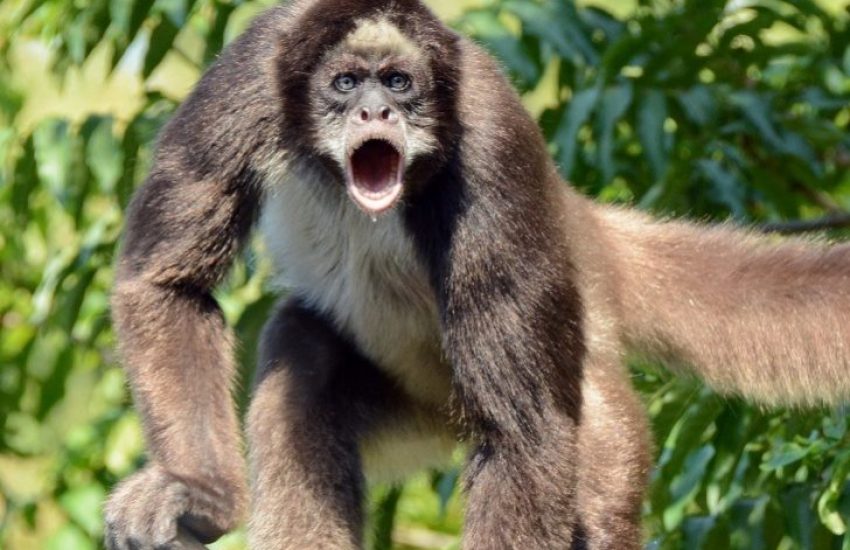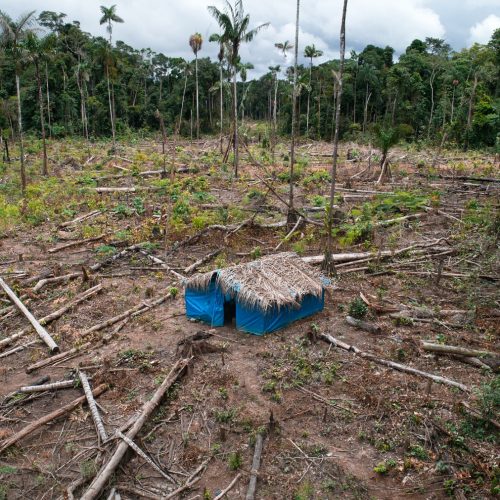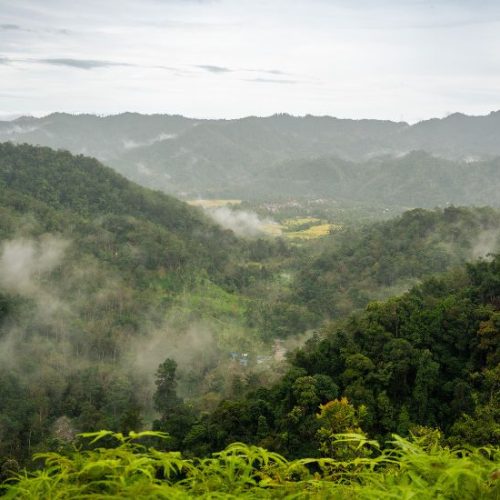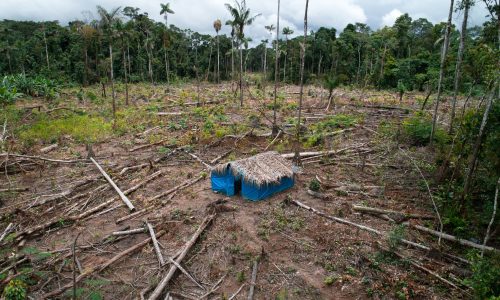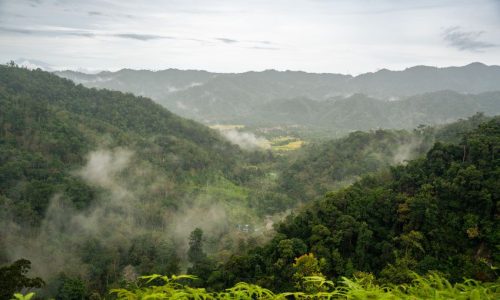Friday 11 december 2020
In Colombia, between the Central and Eastern ranges of the Andes lies the Magdalena River valley. The Magdalena River valley is a biodiversity hotspot and home to many different species. One of them is the brown spider monkey, whose survival is threatened by deforestation and logging. Our local partner organisation Fundación Proyecto Primates (FPP) focuses on protecting the valley and the species living there. Laura Maria Gomez, a recent biology graduate and a research associate at FPP, tells us about the successes and challenges the organisation has faced to protect the valley.
Header photo: Brown Spider Monkey © Joachim Muller
The Magdalena River valley is a biodiversity hotspot and lies within the Colombian Andes. The valley is home to many different species that play important roles in ecosystem dynamics. The catfish, for instance, provides local communities with an important source of income. Lately, the river is being overfished and the valley is under threat. As a result, people have to look for other opportunities to earn their income.
Laura Maria Gomez of FPP says: ‘The main threats for all species in the valley are deforestation, hunting and overfishing, and there is a lot of logging in the area. There is a rise in practices of agriculture and cattle raising. The main goal of FPP is to protect the remaining forests and wetlands and build relationships with the important stakeholders to reconnect these forests through wildlife corridors with their help.’
Protection of the valley
The brown spider monkey is one of the species living in the area and is seriously threatened by deforestation and logging. Gomez tells us that the deforestation causes a shortage in food availability: ‘Primates usually prefer fruits but the area is so fragmented that they have to include more leaves in their diet.’ There is ongoing research about the way the monkeys procreate and whether inbreeding is a problem.
FPP focuses on protecting the Magdalena River valley and the endangered species who live there. In order to protect the valley, FPP has built a strong relationship with other NGOs and wildlife projects, and works with researchers and communities. The organisation has joined forces with students and the government to search for ways to protect the valley by establishing protected areas. Gomez says: ‘The stakeholders in the region are doing a lot of work with local communities, they’ve conducted over 100 workshops on conservation and sustainable development. They encourage communities to be proud of biodiversity and to show the world the importance of the area.’
Working with cattle ranchers
Working together with large cattle companies is very important in order to protect the valley and the species living there. Gomez says: ’We want to give large cattle companies the tools to engage in conservation, to create corridors so the fragmentation can be reduced and wildlife can move between the forests. An important issue is the relationship with the big ranchers, you have to be in constant conversation with them.’
Acquisition of tropical forest and wetlands
With the help of IUCN NL’s Land Acquisition Fund, FPP purchased 150 hectares of tropical forest and 60 hectares of wetlands. Gomez says: ‘We want to use the purchased tropical forest to create a private nature reserve.’ FPP also uses the funding to preserve the ecosystem, work with students, do research and to do ecotourism projects with the communities to show them that biodiversity can be a source of income.
Action plan to help the spider monkey
Proyecto Primates has just started working on a project to build a corridor to increase the area where the brown spider monkey lives. Gomez says: ‘This is one of our biggest projects, it just started and the trees are still small. It also takes a lot of time to come into contact with and meet the different stakeholders, NGOs and government. This is necessary for an action plan to help the spider monkey.’
To protect the area and the brown spider monkey against the threats, it is important that all those involved work together, but unfortunately this is not always the case. Gomez continues: ‘The main problem in Colombia is that we are not working together, we need to realize that we are all on the same page, we need to stick together and do it’. Fundación Proyecto Primates wants to start working on new projects such as building research stations for students, habitat restoration, building corridors, planting and doing community plant activities.
Ultimate dream
Gomez says: ’Our ultimate dream is to protect one of the last populations of Brown spider monkeys, and expand the protected areas, to have all the fragments connected, and to really make it possible for the brown spider monkeys to not be endangered, to secure them. Managing to control or increase the wild populations would be a dream come true. Helping flagship or keystone species will help the entire ecosystem.’ The Brown spider monkey is the flagship species of the valley. The charismatic animal captures the public’s imagination, and encourage people to support conservation projects and symbolizes the area.
The local community, which lives with spider monkeys, needs to be made aware of the importance of the ecosystem and the species living in the forest. If the community’s livelihoods improves in terms of education, housing and income, they will be able to help the environment.
Aid from donors
In order to realize all this, the organisation needs support from funds such as the IUCN NL Land Acquisition Fund. Gomez: ‘This can only be done with the help of donors so that enough money comes in to continue supporting such projects.’ Such donations will help Fundación Proyecto Primates achieve their ultimate goal of safeguarding the brown spider monkey.
